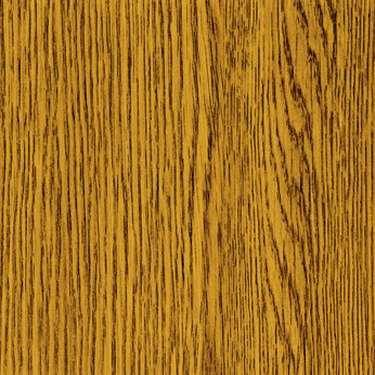Things You'll Need
Towels
Iron
Clamps
Weights

Boards that bend and twist can be nearly impossible to build anything with. Worse yet is the board that waits until it is already a part of a project, then takes a turn for the worse. There are three main tools that can be used to straighten a board; dry heat, wet heat and mechanical force. Oak is a fairly hard wood, with a tight grain that can become brittle and break if forced. When straightening oak, patience is the key. Apply the same techniques you would use for other woods, but plan on taking more time as the change will be more permanent if it is made gradually.
Step 1
Apply damp heat to the concave or cupped face of the board with a towel dampened in clear water. Fold the towel, so that only that face of the board is dampened. Heat a household iron and apply it to the towel to force the moisture into the grain. Leave the iron in place until the towel begins to dry. Check your progress and reapply a freshly dampened towel to further straighten the board if needed.
Video of the Day
Step 2
Heat an iron to its highest setting and apply dry heat to the convex, or bowed-out side of a board. Use a dry folded towel to protect the face of the board. Leave the iron in place for up to a minute before replacing the towel to prevent scorching. Check your progress and continue treatment as needed.
Step 3
Apply mechanical pressure to boards that will not straighten on their own. Place the board on a level work surface and apply pressure with a screw type clamp, such as a C-clamp. Set the board with the bowed ends down, and clamp the center or for longer warps set the bowed ends turned up and clamp the ends. Allow the clamps to set and tighten a turn or two every hour until the board is flush with the top of the work table. Allow it to set overnight before releasing the clamps.
Step 4
Combine wet or dry heat with clamps for particularly stubborn pieces. Apply clamps at the ends and dry heat in the center, or a clamp in the center with a hot, wet towel underneath.
Step 5
Place multiple boards, bowed ends down, with the warped center up on a wet towel in the sun throughout a warm afternoon for straightening, thus applying dry heat to the convex side and damp heat to the concave side. Set a cinder block or other heavy item on the board for additional pressure.
Video of the Day